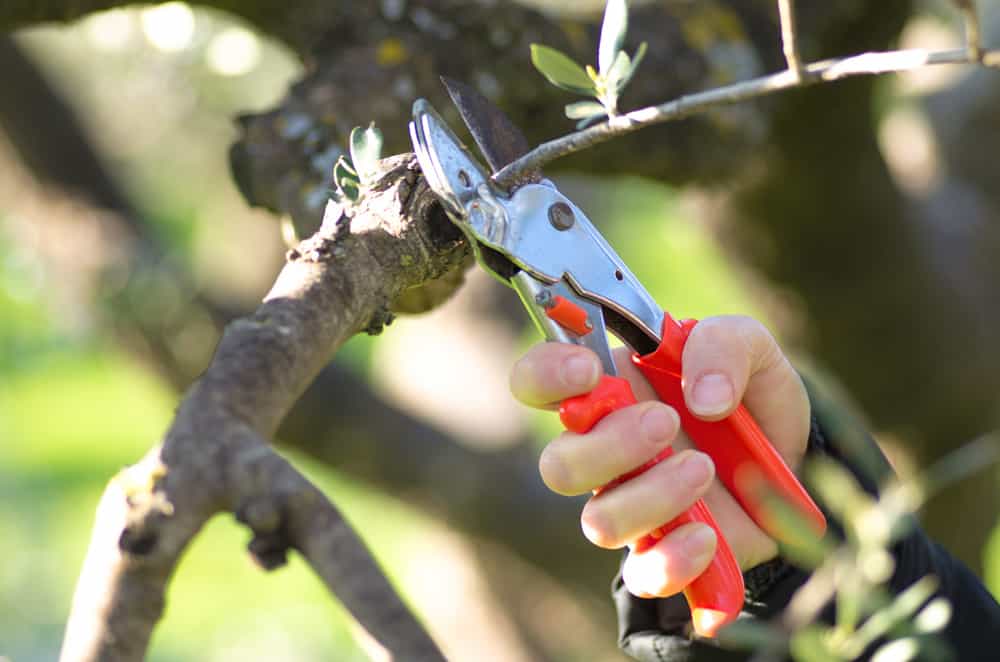No products in the basket.
Your ‘standard’ olive tree could not be any less standard. If you’re looking for a new added extra that will add something a little more personal to your garden, an olive tree can do more than that!
Olive trees are evergreen trees that will add a Mediterranean scent to your garden or patio and in some cases produce fruit. However, the olive trees that are grown in this country are mainly used for an architectural look.
Known for their incredible resilience, the oldest olive trees are believed to have been growing here on Earth for 4,000 years or more. When the conditions are just right, these remarkable trees can live quite literally for millennia. Incredible, isn’t it?
But did you know that they can also survive extremes of temperature and drought? They’ve evolved to withstand everything from scorching heat to chilling winds, and are even able to re-grow when you’d expect them to be well and truly dead. Olive trees have even been known to survive fires, re-growing and returning to full health afterwards.
Although these incredible plants are definitely no pushover, if you want your olive to look its best and remain healthy for decades, you need to show it some love. Many of our customers ask how we keep them well maintained and cared for, so in this guide we’re going to give you our advice and techniques for looking after your new tree.
As the UK’s leading stockist of olive trees – from small, potted trees to ancient gnarled examples – we certainly know a thing or two about looking after them. Here are our top tips.
Understanding Olive Trees
Before we learn how to care for an olive tree in practice, first we need to brush up on our knowledge of the species’ requirements. First up, hardiness.
Hardiness
While olive trees are hardy down to -10°C, a frigid wind can be devastating to young olive trees. Serious cold damage to olive tree branches mainly starts at -5°C, though damage to fast-growing branch tips could occur at 3°C if frost is present.
Temperatures in the mid-teens that last for a long duration could cause considerable damage to larger branches and trunks. However, the extent of the damage may not be obvious for some time. Duration of cold temperatures is a crucial factor to understand; if the temperature falls to below 20°F early in the evening and persists until the early morning, the damage will be much greater than if the temperature only lasted for a few hours.
From our research, we have noticed that many people have grown olive trees in areas that are considered too cold for them to live. These people have taken extreme measures to protect their trees at times of low temperatures.
If you live in a cold environment and you’re unsure if the temperature is suitable, don’t risk it. We recommend covering or wrapping your trees during winter or cold temperatures – just in case.
Growth Rate
Before you get your tree, it’s worth understanding the stages of growth and how much new growth you can expect each year. Typically, an average mature olive tree will eventually grow to a height of between 20 and 30 feet – emphasis on the ‘eventually’. Olives are not known for their rapid growth; you can expect to see somewhere in the region of 2 to 12 inches of annual growth once your tree is mature.
These figures only apply to olives planted in the ground. If you plant yours in a pot, it will grow more slowly – even if you keep up with re-potting the tree as it grows.
The relatively slow growth rate of olive trees explains why fully-grown, mature trees command so much more money than younger trees. It takes a long time for an olive to reach its full height, so if you’re looking for a dramatic and impressive tree that will dominate your garden, you’ll need to opt for an older plant.
The slow growth rate of olives can definitely be a positive, though. Because they take a while to reach maturity, they’re quite easy to manage. Besides occasional pruning and trimming each spring or summer, little is needed to keep them looking good.
Environmental Conditions
Olive trees are native to the Mediterranean, a sunny, generally quite dry and warm part of the world. This explains their resistance to drought – but you may be surprised to learn that these remarkable plants can survive sub-zero temperatures too. As you’ll see later, the most crucial factor to consider is drainage: olive trees need plenty of it.
If you live in the UK and are worried about keeping an olive tree outside over the winter, don’t be. They can be grown here without issue, provided you follow the tips outlined below. As we move into the next section of our guide, we’re going to give you plenty of practical advice to help you keep your tree in fine shape – including protecting it over winter.
Positioning Your Olive Tree
Olive trees generally need as much sunlight as possible. In other words, the more light they have, the longer your olive tree will remain healthy and in its best condition. Although, a little shade can be tolerated with a few precautions. Olive trees are extremely strong; however, a chilly wind can be very damaging below a temperature of -5°C and could penetrate the bark.
We recommend to our customers that they invest in wind protection if possible. Ideally, when deciding where to position your olive tree, you should consider facing them south or west with some protection away from the north and east winds.
Planting Your Olive Tree
Without exception, olive trees require well-drained soil. They can tolerate most soil types, but unless the dampness at the roots can easily pass through, they will slowly decline and die. But don’t panic!
Here are a couple of ways to get around this easily.
- Dig the planting hole roughly the same size as the container. Remove the tree from its container and examine the roots, without disturbing the root ball as much as possible. Before planting, the tree should be well watered. When placing the tree in the hole try planting it slightly higher than ground level and leave about one inch of soil from the surrounding area on top of the root ball. Most experts recommend that you should not add massive quantities of organic matter, soil mix, compost or fertiliser to the planting hole; it can create an artificially good growing medium. The tree must grow into the native soil; adding a good soil mix to a large hole even if mixed with native soil, may create a potted effect and could limit root growth out into the natural soil.
Do not add gravel – this could make a poor drainage problem excessively worse. If pliantly during spring or summer place a drip irrigation emitter next to the tree trunk.
- Alternatively, (and probably easier), if your tree is in a nursery container, turn it upside down and gently slide the tree out and separate the roots without overly disturbing the root ball. Place the tree in the new container and add more soil, no deeper than it was in the original pot. Leave an inch between the soil and the rim of the container, so you’ll have room to water. Use a saucer underneath the container to catch any unwanted drips; allow space for ease of drainage from the soil. If you are wondering when it is best to water, stick your finger about an inch into the pot. If the soil feels dry, that’s when you should water.
If you’re planting your tree in a pot, you will need to repot it periodically as it grows. This is essential, as it prevents the tree from becoming root bound, limiting its growth and affecting its health. Happily, repotting an olive tree isn’t terribly complicated – check out our complete repotting guide for more information.
Watering & Feeding Your Olive Tree
Olive trees are very drought tolerant. If you are looking for a minimal maintenance focal point for your garden, you have come to the right place. Once planted, you never need to water the tree again, however the tree will not look as healthy as it could do with plenty of water. Although, if you are looking to grow the wonderful fruits and flowers that olive trees produce, the soil must never be dry.
During a dry winter, you may need to water your olive tree. Don’t worry about adding any unwanted and unnecessary feed or fertiliser in winter. Olive trees are known to grow incredibly well in poor and even rocky soils. We do recommend a decent compost to treat your olive tree too.
If the chilly weather has led to your tree shedding some of its leaves, then a good water and feed will soon have it replacing them.
Pruning Your Olive Tree
You don’t need to worry too much about pruning your olive tree – just a trim when needed. As a rule, you should not be doing any pruning after August. If you are removing any bulkiness, this must be done in the summer months; smaller shoots should be removed in the spring. This will ensure the tree has enough time to heal before winter sets in. This is due to wintry weather potentially causing an olive tree to shed some of its leaves.
Pruning an olive tree to maximise fruit production is something that most owners of olive trees consider, although it is not a requirement. Pruning is a simple matter of reducing the length of stems by the amount that they are growing each year, or as often as you want to.

Signs of Ill Health
No matter how well you take care of your tree, it could still suffer from some kind of pest or disease. Common pests and diseases that could affect the health of your tree include:
- Woolly aphids
- Scale insects
- Olive leaf spot
- Scab disease
- Verticillium wilt, phytophthora root rot and honey fungus
For a comprehensive list of pests and diseases – along with advice on how to prevent and detect them – check out our comprehensive guide on the subject.
H2: Need Further Advice?
Although we’ve tried to cover all the basics in this guide, if you have any questions that aren’t answered here, you’re always welcome to get in touch with our team. We’re happy to answer your questions and make sure you end up with a tree that’s right for you.
